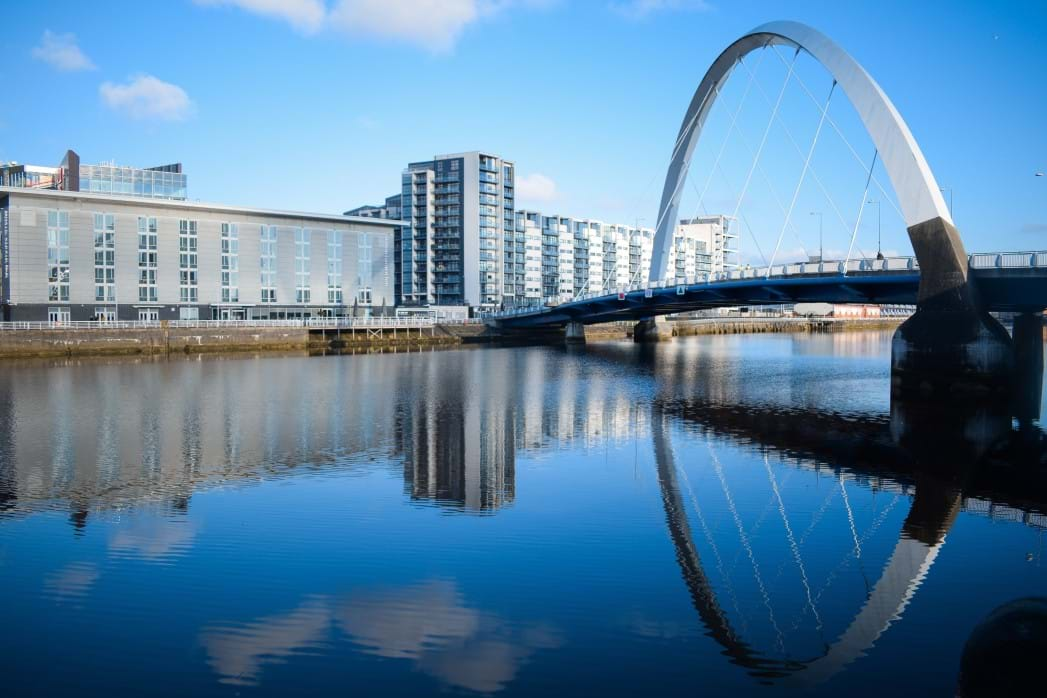COP26 Is Over. What Next for the Water Sector?
OPINION | One thing is clear from COP26 and past gatherings: Politicians are slow to commit to and implement effective climate policies.

newsletter
Every year since Cambi put the first thermal hydrolysis plant into operation in 1995, world leaders and climate experts gather to discuss climate change science and negotiate mitigation policies. The prosaically-named annual Conference of the Parties (COP) has been held 26 times to agree on increasingly stricter binding obligations to reduce global greenhouse gas emissions.
Good COP. Bad COP.
The conference outcomes are often subject to extensive debate in the media, with politicians, environmental organisations and businesses expressing satisfaction or disappointment. How strong is the progress in limiting global warming to 1.5 or 2ºC? How are new policies likely to impact business? While landmark deals like the Kyoto Protocol of 1997 and the Paris Agreement of 2015 are generally considered important steps forward, there have also been fiascos with hardly any consensus or new pledges at all.
What about Glasgow?
This year’s gathering, COP26, brings incremental improvements in the countries’ commitment and policy toolkits to slow down climate change. Reductions in methane emissions and coal use, stopping deforestation and financing the energy transition in developing countries are welcome contributions. The agreement to come with more ambitious pledges next year rather than in 2025 also raises hopes that the Paris Agreement targets remain within reach.
Action over Words
But one thing is clear from this and the past 25 COP gatherings. World politicians are slow to commit to action that mitigates climate change effectively and even slower in developing and implementing effective policies to this effect. Decisive action is needed to stay within the carbon budget by slashing emissions fast.
Climate Change is about Water
Floods, drought, erosion – climate change stresses water systems worldwide, challenging farmers and water utilities to adapt to more frequent extreme weather events. But while adaptation is increasingly important, the water sector is also a considerable emitter and needs to reduce its operational carbon footprint. The challenge is identifying and integrating technology solutions that minimise process emissions and energy demand within budget constraints without disrupting operations.
Several municipalities and leading water utilities are spearheading the trend, pledging target dates for becoming carbon neutral. These climate pioneers are paving the way for more reluctant peers, collaborating with consulting companies and technology suppliers to adopt reliable and financially sound technologies. Due to the long asset life, the solutions chosen in the coming few years will likely remain in operation beyond 2050. Making the right choice for the next upgrade is essential.
From Costly Nuisance to Valuable Bioresources
No single solution can slash climate gas emissions in the water sector enough on its own. But in the transformation of wastewater treatment plants into resource recovery facilities, one solids treatment technology, operating in combination with anaerobic digestion, in many cases comes a long way.
By pre-treating wastewater solids with thermal hydrolysis, anaerobic digestion becomes more efficient. The technology optimises digestion assets, produces more biogas, and significantly reduces biosolids production, bringing users closer to their sustainability goals while saving on costs.
Getting to Zero. Fast.
Since 1995, Cambi’s proven and reliable thermal hydrolysis technology has been adopted at 77 sites in 24 countries. In many cases, it is the sludge treatment solution with the lowest carbon footprint. We estimate that users of thermal hydrolysis systems delivered by Cambi avoid emissions of more than 1 million tonnes of CO2 equivalents each year compared to the next best alternative.
After 26 years, only 2% of the world’s urban population is served by thermal hydrolysis, and the technology is little used for other biogas feedstocks. The potential is considerable, and the climate challenge is increasingly urgent and daunting. We’re just getting started!
Dragoș Tâlvescu is Marketing Director in Cambi. He has 10 years of experience in the energy and water sectors, with focus on strategic issues related to sludge management, natural gas and biogas markets, as well as ESG governance. Before Cambi, Mr. Tâlvescu was personal advisor to the Energy Minister in Romania, and Partner and Consultant in Sund Energy.
Codigestion: Integrating Organic Waste into Sludge Treatment
Learn about codigestion in wastewater treatment plants, its benefits, challenges, and real-world applications.
Dive inBiogas from Wastewater: A Sustainable Energy Solution
Uncover the potential of biogas from sewage sludge and discover how it drives sustainability and saves costs in wastewater treatment plants worldwide.
Dive inA 2025 Guide to Key Water, Wastewater, Biosolids Conferences
Dive into our list of the most anticipated water, wastewater, and biosolids conferences of the year.
Dive inAdvanced Anaerobic Digestion: A Guide to Key Technologies
Take a look at key technologies enabling advanced anaerobic digestion and learn how they optimise sludge treatment in the wastewater industry.
Dive in